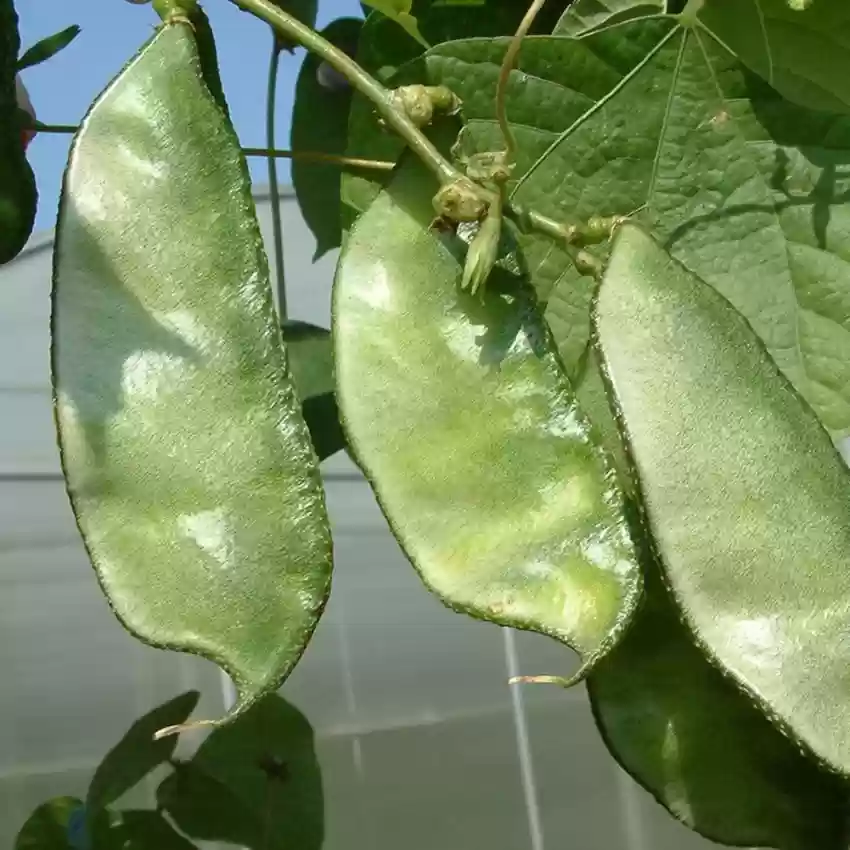Elephant Ear Bean Gardening seeds
₹80.00 Original price was: ₹80.00.₹50.00Current price is: ₹50.00.
Elephant Ear Bean Gardening seeds
Quantity: 20 seeds (10 grams)
Elephant Ear Bean seeds offer a bountiful harvest of nutritious beans. Packed with protein, fiber, and essential vitamins and minerals, these beans are not only delicious but also a valuable addition to any kitchen garden.
Elephant Ear Bean Gardening seeds
Elephant ear beans (Dolichos) are popular legumes grown in India and various other tropical and subtropical regions. Here’s an overview of growing dolichos in India:
Botanical Description:
- Plant Type: Elephant ear beans plants are climbers or trailing vines that belong to the legume family, Fabaceae.
- Leaves: The leaves are trifoliate (having three leaflets) and typically broad.
- Flowers: Elephant ear beans plants produce attractive flowers in clusters. The flowers can be various shades of purple, pink, or white, depending on the cultivar.
- Pods: The pods of Elephant ear beans are long and cylindrical, containing several seeds.
Varieties:
- Common Varieties: In India, popular varieties of Elephant Ear Bean Gardening seeds include the “Pusa Navrang” and “Pusa Barsati” varieties, which are known for their adaptability to Indian agro-climatic conditions.
Growing Conditions:
- Climate: Dolichos thrives in warm climates and is well-suited to tropical and subtropical regions. It requires temperatures above 20°C (68°F) for optimal growth.
- Soil: Well-drained, loamy soil rich in organic matter is ideal for dolichos. It should have a pH between 6.0 and 7.5. Dolichos plants are not very demanding in terms of soil fertility but benefit from regular watering and mulching.
- Propagation: Dolichos is typically grown from seeds, which can be sown directly into the soil after the last frost date in your region.
- Spacing: Plant seeds or seedlings about 15-20 cm apart, with rows spaced 60-75 cm apart.
- Support: Given their climbing habit, dolichos benefit from support structures such as trellises, poles, or bamboo frames. This helps in maximizing space and makes harvesting easier.
Care and Maintenance:
- Watering: Elephant Ear Bean Gardening seeds plants require regular watering, especially during flowering and pod development stages. Avoid water stress to ensure good pod formation.
- Fertilization: Incorporate well-decomposed organic matter into the soil before planting. Apply a balanced fertilizer (e.g., 10-10-10) at planting time and side-dress with nitrogen fertilizer when the plants are growing vigorously.
- Weed Control: Keep the planting area free from weeds, which compete with dolichos for nutrients, water, and sunlight.
- Pest and Disease Management: Monitor plants for common pests like aphids, bean beetles, and caterpillars. Practice integrated pest management (IPM) and use organic treatments when possible. Diseases such as powdery mildew and root rot can affect dolichos in humid conditions.
Harvesting:
- Elephant Ear Bean Gardening seeds pods are typically ready for harvest 60-90 days after planting, depending on the variety and growing conditions. Harvest pods when they are young and tender for the best flavor and texture.
- Cut the pods from the plant with a sharp knife or scissors. Handle them carefully to avoid damaging the vines.
Culinary Uses:
- Dolichos beans are versatile in culinary applications. They can be used in soups, stews, curries, salads, and as a side dish with rice or bread.
- Young pods can be cooked and consumed similar to green beans.
Conclusion:
Growing Elephant Ear Bean Gardening seeds in India can provide a fresh supply of nutritious legumes and enhance the diversity of homegrown produce. By following recommended practices and adapting to local conditions, farmers and gardeners can successfully cultivate dolichos beans and enjoy their culinary benefits.
Native seeds, heirloom seeds, organic seeds, open pollinated seeds, dolichos seeds, desi seeds, hooga seeds, vegetable seeds, seed store, gardening seeds, seed savers of India
| Weight | 15 g |
|---|---|
| Dimensions | 11 × 8.5 × 11 cm |
Related products
100 varieties Vegetable Seeds Combo Pack
₹7,000.00Original price was: ₹7,000.00.₹6,150.00Current price is: ₹6,150.00. -12%BULK SEED
₹0.00Red Yard Long Bean Gardening Seeds
₹120.00Original price was: ₹120.00.₹100.00Current price is: ₹100.00. -17%Dolichos Chicken Beans Violet Local Seeds
₹80.00Original price was: ₹80.00.₹50.00Current price is: ₹50.00. -38%







Reviews
There are no reviews yet.